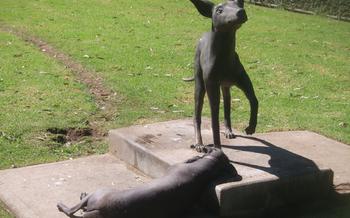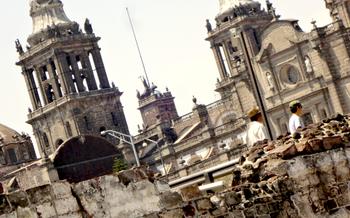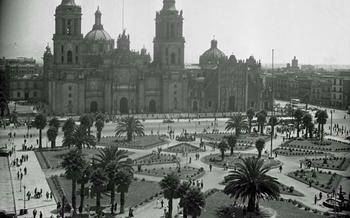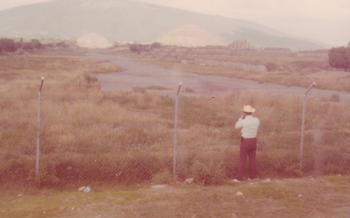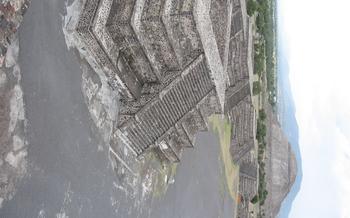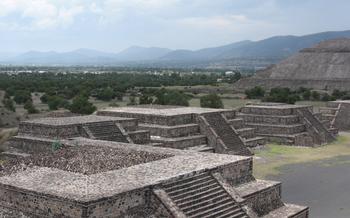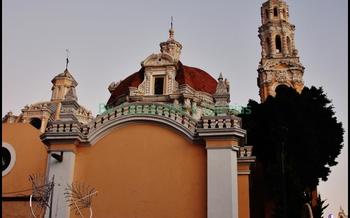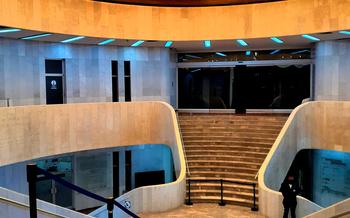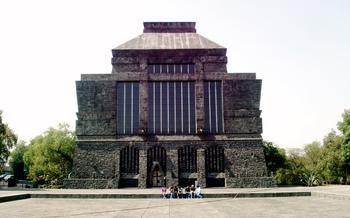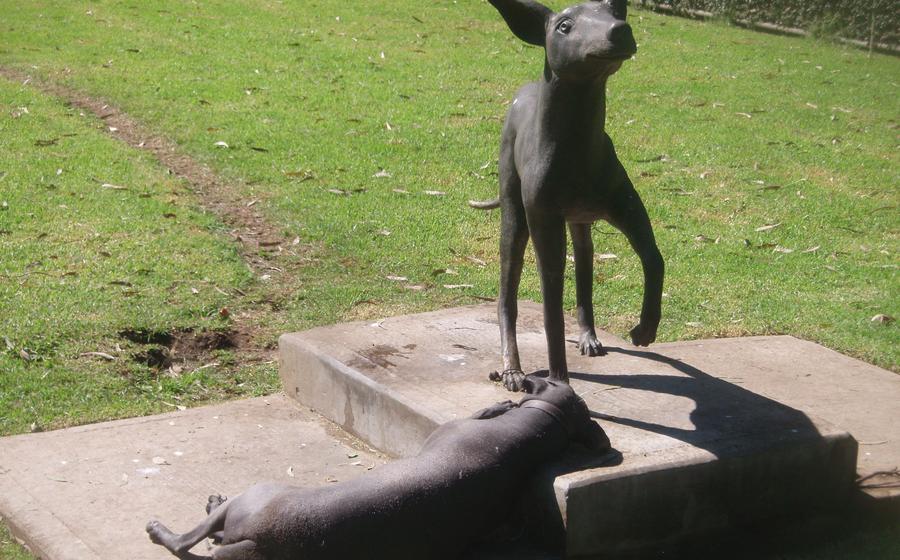
Museo Dolores Olmedo
- Frida Kahlo's Paintings: A Window into Her Life and Struggles
- The Xochimilco Connection: A Glimpse into Frida Kahlo's Childhood
- The Floating Gardens of Xochimilco: A UNESCO World Heritage Site
- The Anahuacalli Museum: Diego Rivera's Architectural Masterpiece
- The Frida Kahlo Museum Shop: A Treasure Trove of Unique Souvenirs
- The Diego Rivera and Frida Kahlo Studio Museum: A Glimpse into Their Creative Process
- The Frida Kahlo Garden: A Sanctuary of Beauty and Inspiration
- Xochimilco's Traditional Markets: A Feast for the Senses
- Museum of Popular Art: Celebrating Mexican Folk Art and Traditions
- Insider Tip: Unveiling the Secret Frida Kahlo Mural at the National Palace
Frida Kahlo's Paintings: A Window into Her Life and Struggles
Frida Kahlo's paintings are a deeply personal and introspective journey into her life and experiences. Through her art, she expressed her physical pain, emotional struggles, and unique perspective on the world. Her paintings often depicted her own body, as a means of exploring her identity, sexuality, and the challenges she faced as a woman in a male-dominated society.
Kahlo's style is characterized by its vibrant colors, bold lines, and surreal imagery. She often incorporated elements of Mexican folk art, symbolism, and pre-Columbian culture into her work. Her paintings are not only visually striking but also deeply emotional, inviting viewers to delve into her inner world and understand her complex experiences.
One of the most iconic paintings in the Museo Dolores Olmedo collection is "The Two Fridas" (1939). In this painting, Kahlo depicts herself as two distinct figures, representing the different sides of her personality. One Frida is dressed in a traditional Mexican Tehuana costume, symbolizing her connection to her Mexican heritage. The other Frida is dressed in a European-style gown, representing her exposure to Western culture. The two Fridas are joined by a single heart, symbolizing the unity of her divided self.
Through her paintings, Frida Kahlo not only expressed her own struggles but also gave voice to the experiences of other women who had been marginalized or silenced. Her art continues to resonate with audiences worldwide, inspiring and empowering those who have faced similar challenges.
The Xochimilco Connection: A Glimpse into Frida Kahlo's Childhood
Xochimilco, a neighborhood located in the southern part of Mexico City, played a significant role in shaping Frida Kahlo's identity and art. This picturesque area, known for its canals and chinampas (floating gardens), was where Frida spent her childhood and early years.
Xochimilco's unique environment and rich cultural traditions deeply influenced Frida's artistic perspective. The vibrant colors, lush vegetation, and the way of life in Xochimilco can be seen reflected in many of her paintings. Xochimilco's canals, for example, often appear as recurring motifs in her works, symbolizing her connection to her roots and her fascination with the natural world.
Visiting Xochimilco today is like stepping into a living postcard. The canals are still lined with colorful boats, and the chinampas are still cultivated by local farmers using traditional techniques. Visitors can take a boat tour to explore the canals and see the chinampas up close, getting a glimpse into the world that shaped Frida Kahlo's childhood and artistic imagination.
To fully experience Xochimilco's charm, be sure to visit the Mercado de Xochimilco, a traditional market where locals sell fresh produce, handicrafts, and other goods. The market is a bustling hive of activity, offering a vibrant glimpse into the daily life of the neighborhood.
Suggested Activity: Take a boat tour of the Xochimilco canals and visit the Mercado de Xochimilco to experience the unique atmosphere and charm of Frida Kahlo's childhood neighborhood.
The Floating Gardens of Xochimilco: A UNESCO World Heritage Site
Xochimilco's floating gardens, known as chinampas, are a unique and remarkable feature of this historic neighborhood. Constructed by the Aztecs centuries ago, these ingenious agricultural systems consist of artificial islands built from layers of mud and vegetation. The chinampas are a testament to the creativity and resourcefulness of the ancient Mexicans, who transformed a marshy wetland into a productive agricultural landscape.
Today, the floating gardens of Xochimilco are recognized as a UNESCO World Heritage Site, a testament to their cultural and historical significance. Visitors can take a boat tour through the canals that crisscross the chinampas, admiring the lush vegetation and the colorful flowers that adorn these floating islands. Along the way, they can also learn about the traditional farming techniques still used by local farmers, who cultivate a variety of crops, including vegetables, flowers, and herbs.
The floating gardens of Xochimilco offer a glimpse into a unique and sustainable way of life. They are a testament to the ingenuity and resilience of the Mexican people, who have preserved this ancient tradition for centuries. Whether you're interested in history, agriculture, or simply want to experience the beauty of nature, a visit to Xochimilco's floating gardens is a must.
The Anahuacalli Museum: Diego Rivera's Architectural Masterpiece
Amidst the vibrant neighborhood of San Pablo Tepetlapa, the Anahuacalli Museum stands as a testament to Diego Rivera's passion for pre-Columbian art and architecture. Designed and built by Rivera himself, the museum is a unique blend of modern and ancient aesthetics, showcasing his extensive collection of pre-Hispanic artifacts alongside his own artwork.
The building's striking design is inspired by the ancient pyramids of Teotihuacan, with its stepped terraces and imposing façade. Rivera meticulously planned every aspect of the museum, from its layout to its interior decoration, ensuring that it would serve as a fitting tribute to the rich cultural heritage of Mexico.
Inside the Anahuacalli Museum, visitors are greeted by a vast collection of pre-Columbian sculptures, pottery, and other artifacts, carefully arranged to tell the story of Mexico's ancient civilizations. Rivera's own artwork is also prominently displayed, including paintings, murals, and drawings that reflect his fascination with Mexican history and identity.
The museum's highlights include Rivera's monumental mural, "The History of Mexico," which depicts key moments from the country's past, from the pre-Columbian era to the Mexican Revolution. The mural is a testament to Rivera's artistic prowess and his commitment to using art as a means to educate and inspire.
Visiting the Anahuacalli Museum is a unique and immersive experience that allows visitors to delve into the mind of one of Mexico's most celebrated artists and explore the rich cultural heritage of the country.
The Frida Kahlo Museum Shop: A Treasure Trove of Unique Souvenirs
Within the vibrant walls of the Frida Kahlo Museum, visitors will discover a treasure trove of unique souvenirs at the Frida Kahlo Museum Shop. This charming boutique offers an array of Frida Kahlo-inspired merchandise that captures the essence of her extraordinary life and art. From beautifully crafted books and prints to exquisite jewelry and home décor, each item is a testament to Frida's enduring legacy.
The shop's collection is a celebration of Frida's vibrant personality and artistic style. Visitors can find books that delve into her life, her art, and her tumultuous relationship with Diego Rivera. There are also stunning prints of her iconic paintings, allowing art enthusiasts to take home a piece of her genius.
For those seeking a more personal connection to Frida, the shop offers a range of jewelry inspired by her distinctive style. From bold necklaces featuring her signature flowers to delicate earrings adorned with her likeness, these pieces are a subtle yet stylish way to pay homage to the artist.
The Frida Kahlo Museum Shop also offers a variety of home décor items that bring Frida's unique aesthetic into any living space. From colorful cushions and vibrant tablecloths to quirky Frida-themed kitchenware, these items add a touch of Mexican flair to any home.
The popularity of Frida Kahlo merchandise is a testament to her enduring legacy and the deep connection that people feel with her art and her story. Whether you're a longtime admirer or a newfound fan, the Frida Kahlo Museum Shop offers a unique opportunity to take home a piece of her extraordinary world.
The Diego Rivera and Frida Kahlo Studio Museum: A Glimpse into Their Creative Process
Nestled in the heart of Mexico City's Coyoacán neighborhood, the Diego Rivera and Frida Kahlo Studio Museum offers a unique opportunity to step into the creative world of these two iconic artists. Housed in their former studio, the museum provides an intimate glimpse into their artistic process and personal lives.
Visitors can wander through the rooms where Rivera and Kahlo created some of their most famous works, surrounded by their personal belongings, tools, and unfinished projects. The studio has been meticulously preserved, allowing visitors to imagine the artists at work, surrounded by their inspirations and the vibrant energy of their creative collaboration.
Among the highlights of the museum's collection are Rivera's unfinished mural, "The History of Mexico," which provides a glimpse into his artistic process and his passion for depicting Mexican history and culture. Kahlo's studio, on the other hand, features a collection of her personal items, including her paints, brushes, and the traditional Mexican clothing she often wore.
The Diego Rivera and Frida Kahlo Studio Museum is a must-visit for anyone interested in the lives and work of these two extraordinary artists. It offers a rare chance to step into their creative sanctuary and gain a deeper understanding of their artistic journey.
The Frida Kahlo Garden: A Sanctuary of Beauty and Inspiration
Nestled within the Frida Kahlo Museum, the Frida Kahlo Garden is an oasis of tranquility and beauty that offers visitors a glimpse into the artist's personal life and inspirations. Designed by Frida Kahlo herself, the garden was a labor of love where she found solace and drew inspiration for her art.
The garden is a riot of color and fragrance, with exotic plants and vibrant flowers from all over Mexico. Kahlo's love for nature is evident in her choice of plants, which include cacti, succulents, bougainvillea, and roses. She also incorporated traditional Mexican elements into the garden, such as a fountain and a colorful tile pathway.
Visitors to the garden can wander along the winding paths, admiring the lush vegetation and taking in the sweet scents of the flowers. The garden is a sanctuary for birds and butterflies, adding to its peaceful and serene atmosphere.
While the garden is small, it is packed with symbolism and meaning. Each plant and flower was carefully chosen by Kahlo for its medicinal or symbolic properties. For example, the aloe vera plant is known for its healing properties, while the bougainvillea symbolizes passion and resilience.
The Frida Kahlo Garden is a living testament to the artist's love of nature and her ability to find beauty even in the most difficult of circumstances. It is a place of peace and inspiration that offers visitors a unique insight into the life and mind of Frida Kahlo.
Xochimilco's Traditional Markets: A Feast for the Senses
Xochimilco's traditional markets are a vibrant and colorful tapestry of sights, sounds, and aromas, offering a glimpse into the daily life and culture of this unique neighborhood. Located throughout the borough, these markets are a hub of activity where locals buy and sell fresh produce, handicrafts, and other goods.
Strolling through the bustling aisles, visitors are greeted by a cacophony of voices, the smell of freshly cut flowers, and the sight of colorful stalls adorned with an array of goods. Vendors display their wares with pride, from mounds of ripe tomatoes and fragrant herbs to intricately woven baskets and hand-painted pottery.
The markets are not just a place for shopping; they are also a place for socializing and community building. Locals gather here to catch up with friends, share stories, and exchange the latest news. The air is filled with laughter, chatter, and the occasional strumming of a guitar.
For visitors, Xochimilco's traditional markets offer a chance to experience the authentic flavor of Mexico. Here, you can sample delicious local delicacies such as freshly made tortillas, tamales, and atole, or indulge in sweet treats like churros and buñuelos. You can also find unique souvenirs to take home, such as hand-embroidered textiles, silver jewelry, and colorful alebrijes (folk art sculptures).
Whether you're looking for fresh produce, handicrafts, or simply a glimpse into the local way of life, Xochimilco's traditional markets are a must-visit destination. Immerse yourself in the vibrant atmosphere, engage with the friendly vendors, and discover the hidden treasures that these markets hold.
Museum of Popular Art: Celebrating Mexican Folk Art and Traditions
Nestled in the heart of Mexico City, the Museum of Popular Art (Museo de Arte Popular) is a vibrant showcase of Mexican folk art and traditions. Established in 1982, the museum is dedicated to preserving and promoting the rich cultural heritage of Mexico's diverse indigenous and mestizo communities.
The museum's collection boasts over 10,000 pieces of folk art, representing a wide range of techniques and styles from across the country. Visitors can admire intricate textiles, colorful pottery, whimsical masks, and other traditional crafts that reflect the unique identities and traditions of Mexico's many regions.
One of the highlights of the museum is its collection of alebrijes, fantastical creatures made from papier-mâché and brightly painted with intricate designs. These whimsical figures, originally from Oaxaca, have become iconic symbols of Mexican folk art and are a must-see for any visitor to the museum.
The Museum of Popular Art also hosts temporary exhibitions, workshops, and educational programs that delve deeper into the history, techniques, and significance of Mexican folk art. These events provide a platform for artists to share their skills and knowledge, ensuring that these traditional crafts continue to thrive for generations to come.
Visiting the Museum of Popular Art is a journey into the heart of Mexican culture, where visitors can discover the beauty, diversity, and enduring spirit of Mexico's folk art traditions.
Insider Tip: Unveiling the Secret Frida Kahlo Mural at the National Palace
Amidst the grandeur of Mexico City's National Palace, a hidden gem awaits discovery: a secret mural by Frida Kahlo. Created in 1929, this remarkable work of art, known as "Marxism Will Give Health to the Sick," was commissioned by then-Minister of Education José Vasconcelos as part of a larger mural project. However, due to political controversy, the mural was covered up and remained hidden for decades.
In 2002, after years of neglect and obscurity, the Kahlo mural was finally uncovered and restored, revealing a vibrant and powerful depiction of a skeletal figure embracing a sick child. The mural is a testament to Kahlo's artistic talent and her commitment to social justice, reflecting her belief in the transformative power of Marxism to heal the ills of society.
To view this hidden gem, visitors to the National Palace must request access to the third floor, where the mural is located. Once inside, prepare to be captivated by the intensity of Kahlo's brushstrokes, the symbolism embedded in every detail, and the poignant narrative that unfolds before your eyes. Discover the secrets of this extraordinary mural and gain a deeper appreciation for Frida Kahlo's artistic genius and her unwavering commitment to social change.
